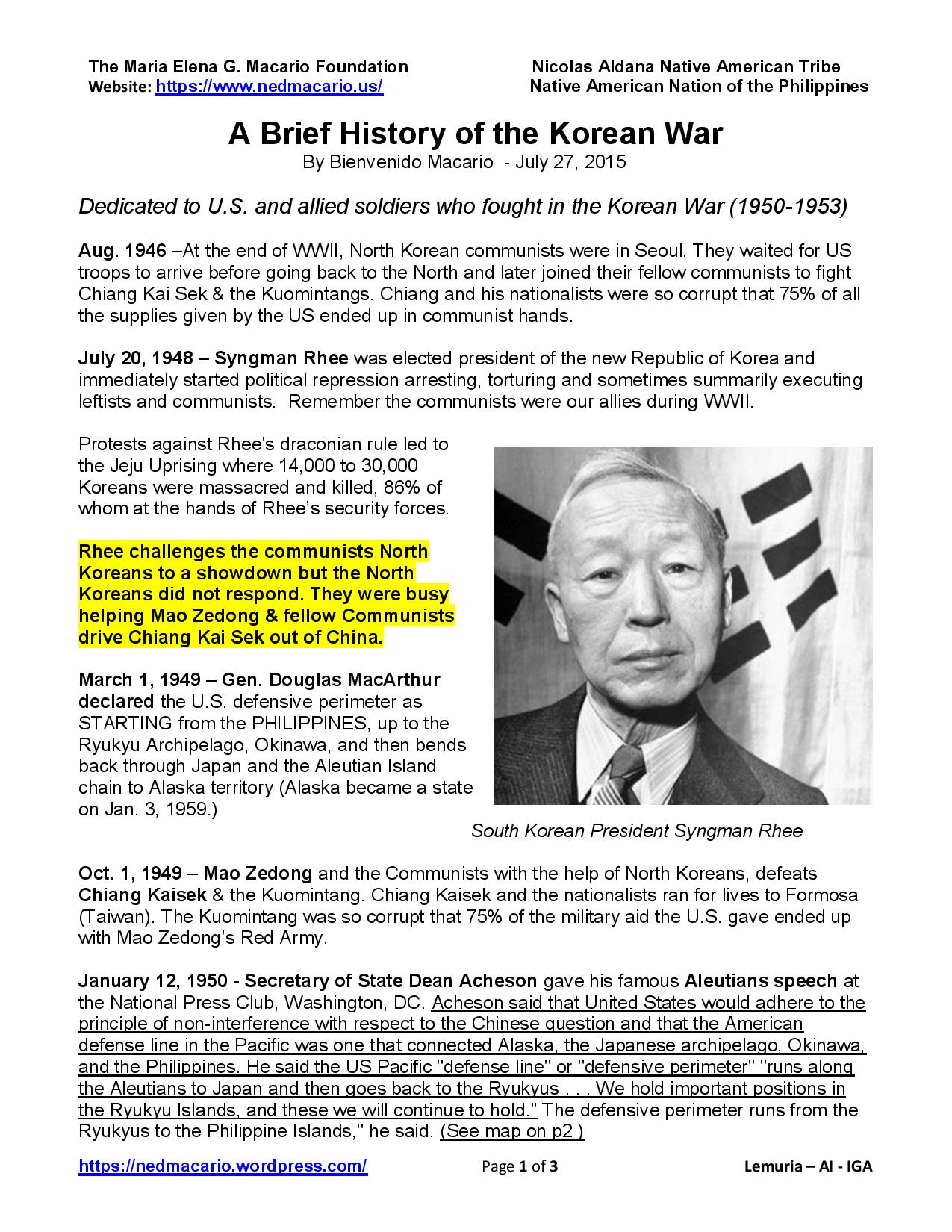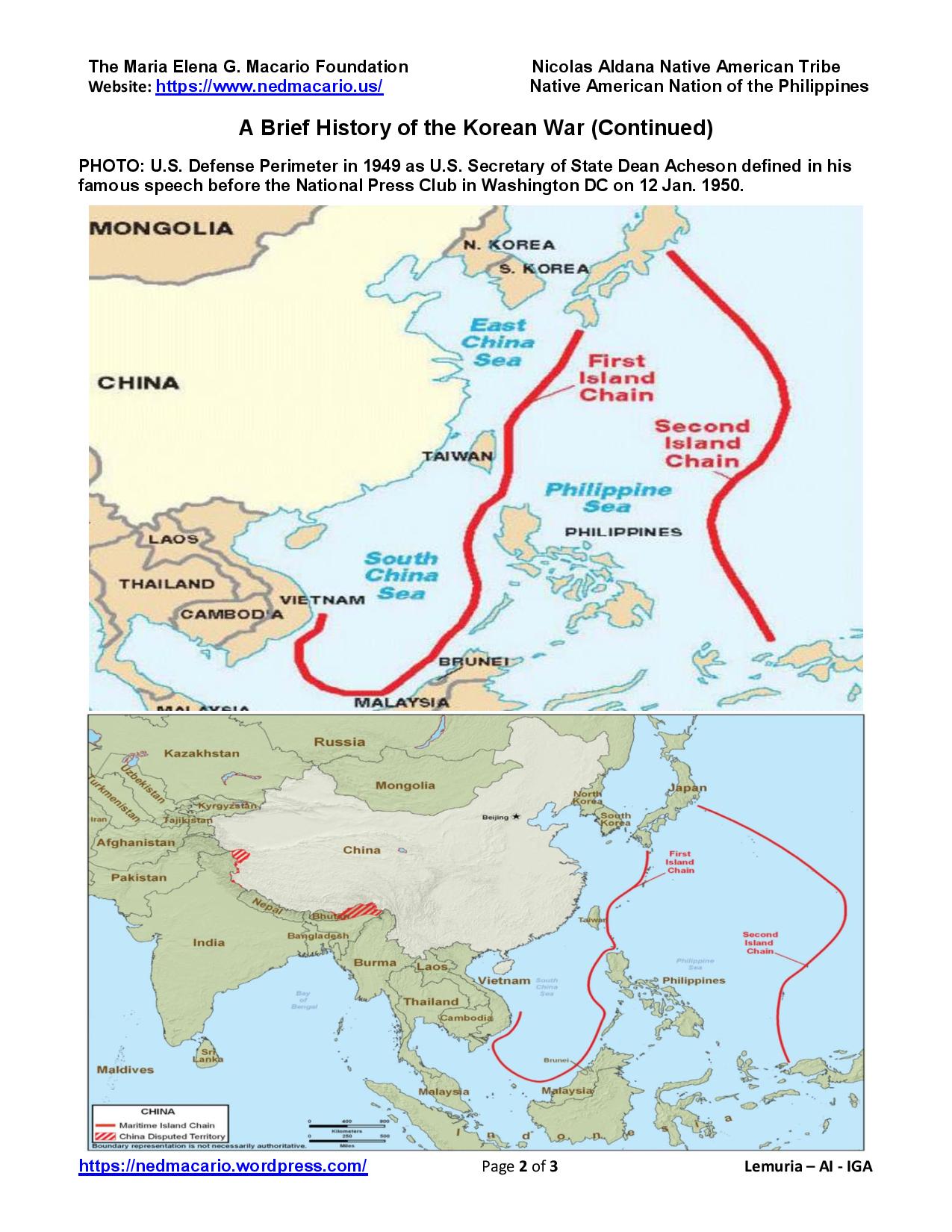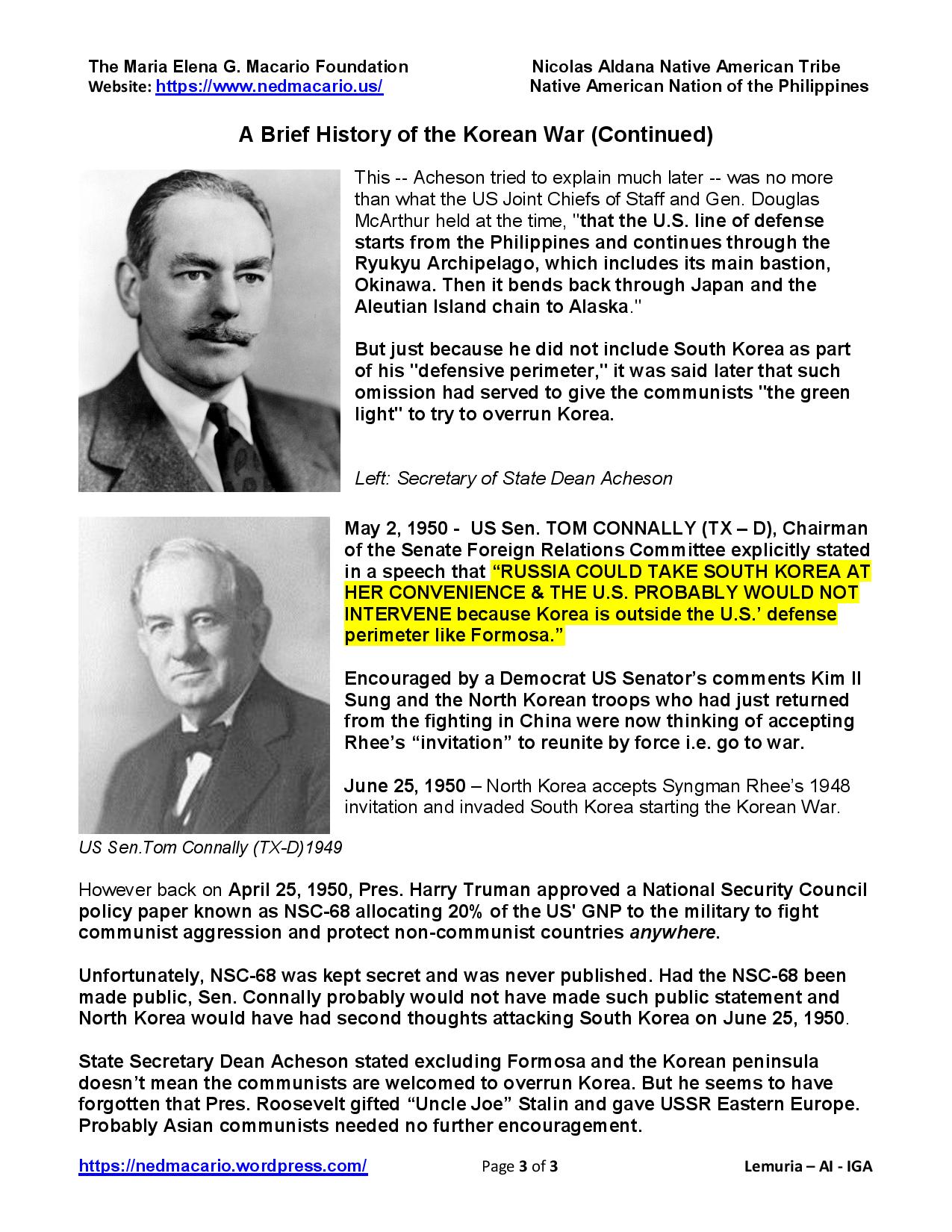https://www.facebook.com/BienvenidoMacario/posts/10208258060801925
A Brief History of the Korean War
(How the U.S. Congress started the Korean War)
By Bienvenido Macario – July 27, 2015
Dedicated to U.S. and allied soldiers who fought in the Korean War (1950-1953)
Aug. 1946 –At the end of WWII, North Korean communists were in Seoul. They waited for US troops to arrive before going back to the North and later joined their fellow communists to fight Chiang Kai Sek & the Kuomintangs. Chiang and his nationalists were so corrupt that 75% of all the supplies given by the US ended up in communist hands.
July 20, 1948 – Syngman Rhee was elected president of the new Republic of Korea and immediately started political repression arresting, torturing and sometimes summarily executing leftists and communists. Remember the communists were our allies during WWII.
Protests against Rhee’s draconian rule led to the Jeju Uprising where 14,000 to 30,000 Koreans were massacred and killed, 86% of whom at the hands of Rhee’s security forces.
Rhee challenges the communists North Koreans to a showdown but the North Koreans did not respond. They were busy helping Mao Zedong & fellow Communists drive Chiang Kai Sek out of China.
March 1, 1949 – Gen. Douglas MacArthur declared the U.S. defensive perimeter as STARTING from the PHILIPPINES, up to the Ryukyu Archipelago, Okinawa, and then bends back through Japan and the Aleutian Island chain to Alaska territory (Alaska became a state on Jan. 3, 1959.)
Oct. 1, 1949 – Mao Zedong and the Communists with the help of North Koreans, defeats Chiang Kaisek & the Kuomintang. Chiang Kaisek and the nationalists ran for lives to Formosa (Taiwan). The Kuomintang was so corrupt that 75% of the military aid the U.S. gave ended up with Mao Zedong’s Red Army.
January 12, 1950 – Secretary of State Dean Acheson gave his famous Aleutians speech at the National Press Club, Washington, DC. Acheson said that United States would adhere to the principle of non-interference with respect to the Chinese question and that the American defense line in the Pacific was one that connected Alaska, the Japanese archipelago, Okinawa, and the Philippines. He said the US Pacific “defense line” or “defensive perimeter” “runs along the Aleutians to Japan and then goes back to the Ryukyus . . . We hold important positions in the Ryukyu Islands, and these we will continue to hold.” The defensive perimeter runs from the Ryukyus to the Philippine Islands,” he said. (See map on p2 )
This — Acheson tried to explain much later — was no more than what the US Joint Chiefs of Staff and Gen. Douglas McArthur held at the time, “that the U.S. line of defense starts from the Philippines and continues through the Ryukyu Archipelago, which includes its main bastion, Okinawa. Then it bends back through Japan and the Aleutian Island chain to Alaska.”
But just because he did not include South Korea as part of his “defensive perimeter,” it was said later that such omission had served to give the communists “the green light” to try to overrun Korea.
May 2, 1950 – US Sen. TOM CONNALLY (TX – D), Chairman of the Senate Foreign Relations Committee explicitly stated in a speech that “Russia could take South Korea at her convenience & the U.S. probably would not intervene because Korea is outside the U.S.’ defense perimeter like Formosa.”
Encouraged by a Democrat US Senator’s comments Kim Il Sung and the North Korean troops who had just returned from the fighting in China were now thinking of accepting Rhee’s “invitation” to reunite by force i.e. go to war.
June 25, 1950 – North Korea accepts Syngman Rhee’s 1948 invitation and invaded South Korea starting the Korean War.
However back on April 25, 1950, Pres. Harry Truman approved a National Security Council policy paper known as NSC-68 allocating 20% of the US’ GNP to the military to fight communist aggression and protect non-communist countries anywhere.
Unfortunately, NSC-68 was kept secret and was never published. Had the NSC-68 been made public, Sen. Connally probably would not have made such public statement and North Korea would have had second thoughts attacking South Korea on June 25, 1950.
State Secretary Dean Acheson stated excluding Formosa and the Korean peninsula doesn’t mean the communists are welcomed to overrun Korea. But he seems to have forgotten that Pres. Roosevelt gifted “Uncle Joe” Stalin and gave USSR Eastern Europe. Probably Asian communists needed no further encouragement.



